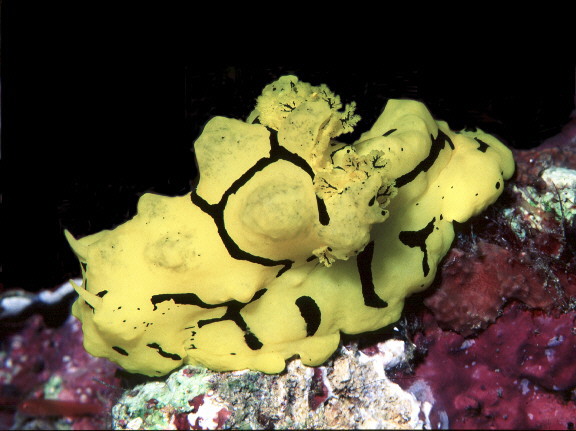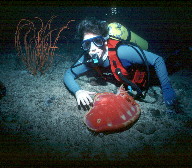
Notodoris minor
Notodoris minor Eliot, 1904
This large, bright, aposematic colored species, while beautiful, does not follow the typical soft and delicate body style of most opisthobranchs. Its body is firm and rigid. A slow crawler, it often times looks more like a sponge than a dorid nudibranch.
Reaching more than 100 mm in length the bright yellow body has a few black lines and spots. Its large egg mass is the same yellow color. This species is found on reef crests and slopes to 20 m deep, where it feeds on the yellow calcareous sponge, Leucetta chagosensis Dendy, 1913 (see Coral Reef Animals of the Indo-Pacific, page 16, sp. # 3).
It is widely distributed from Tanzania; Oman to Australia; New Guinea; Indonesia; Philippines and Okinawa.
Photo courtesy of Mary Jane Adams of Arcadia, California:

The picture at left of Mary was taken with a 44 cm long Spanish Dancer at Beqa Lagoon, Vitu Levu, Fiji. This nudibranch, accompanied by a slighly smaller one, were regulary seen grazing between two particular bommies. Send Mary Jane mail at mjadams@earthlink |
Taxonomic information courtesy of:

David W. Behrens
Author:
Pacific Coast Nudibranchs
Send Dave mail at seachalleng@earthlink.net
|
